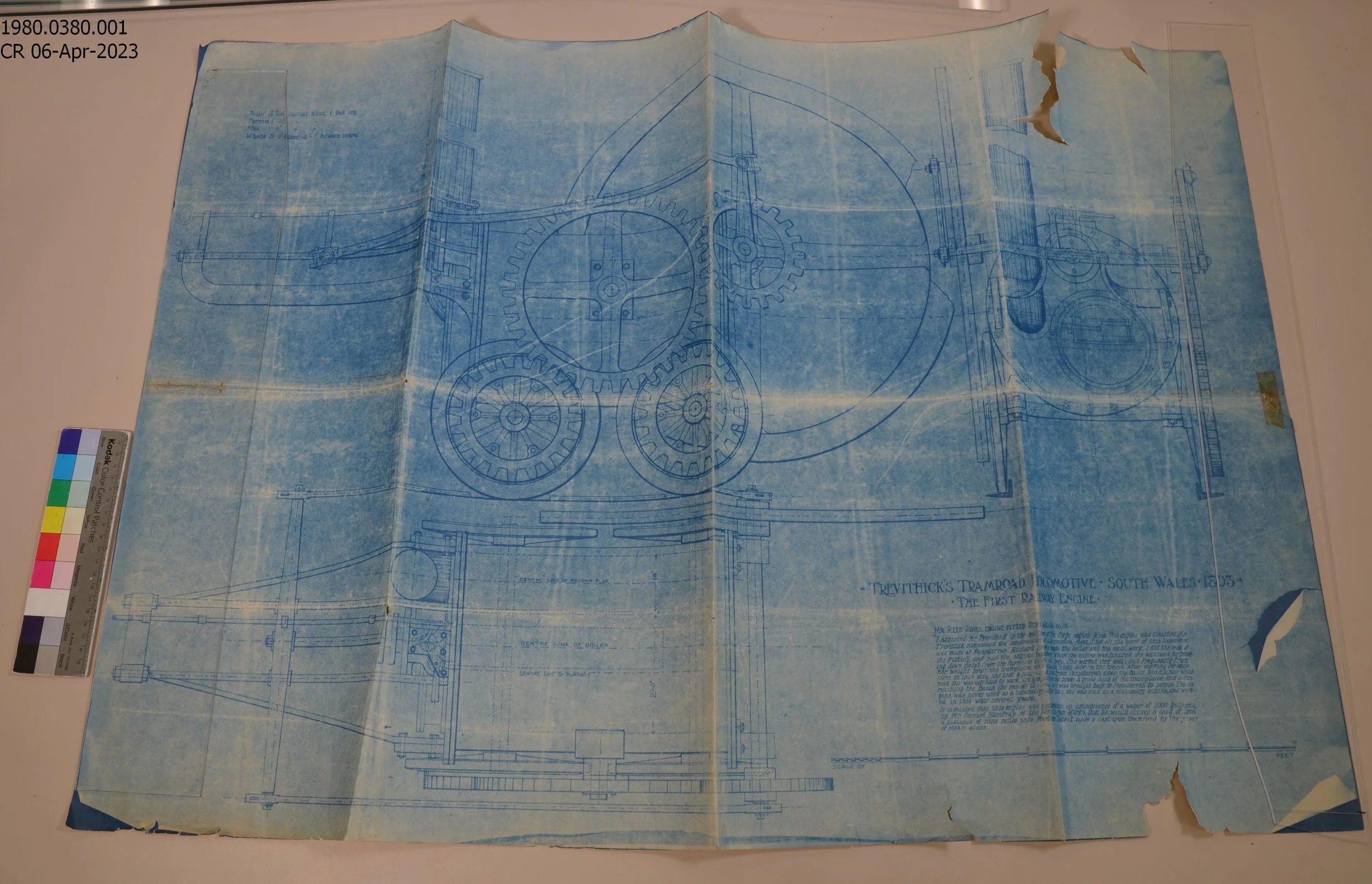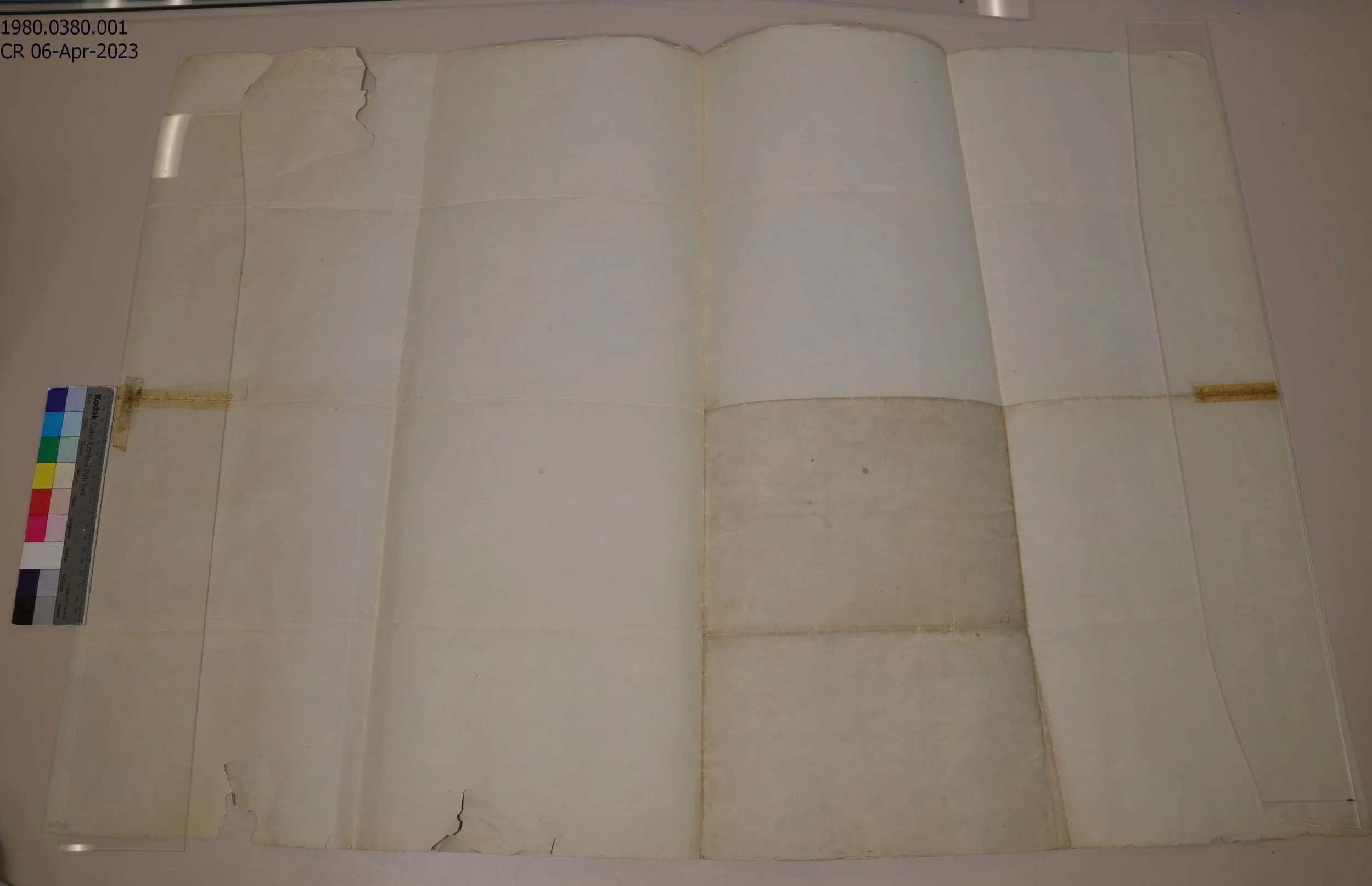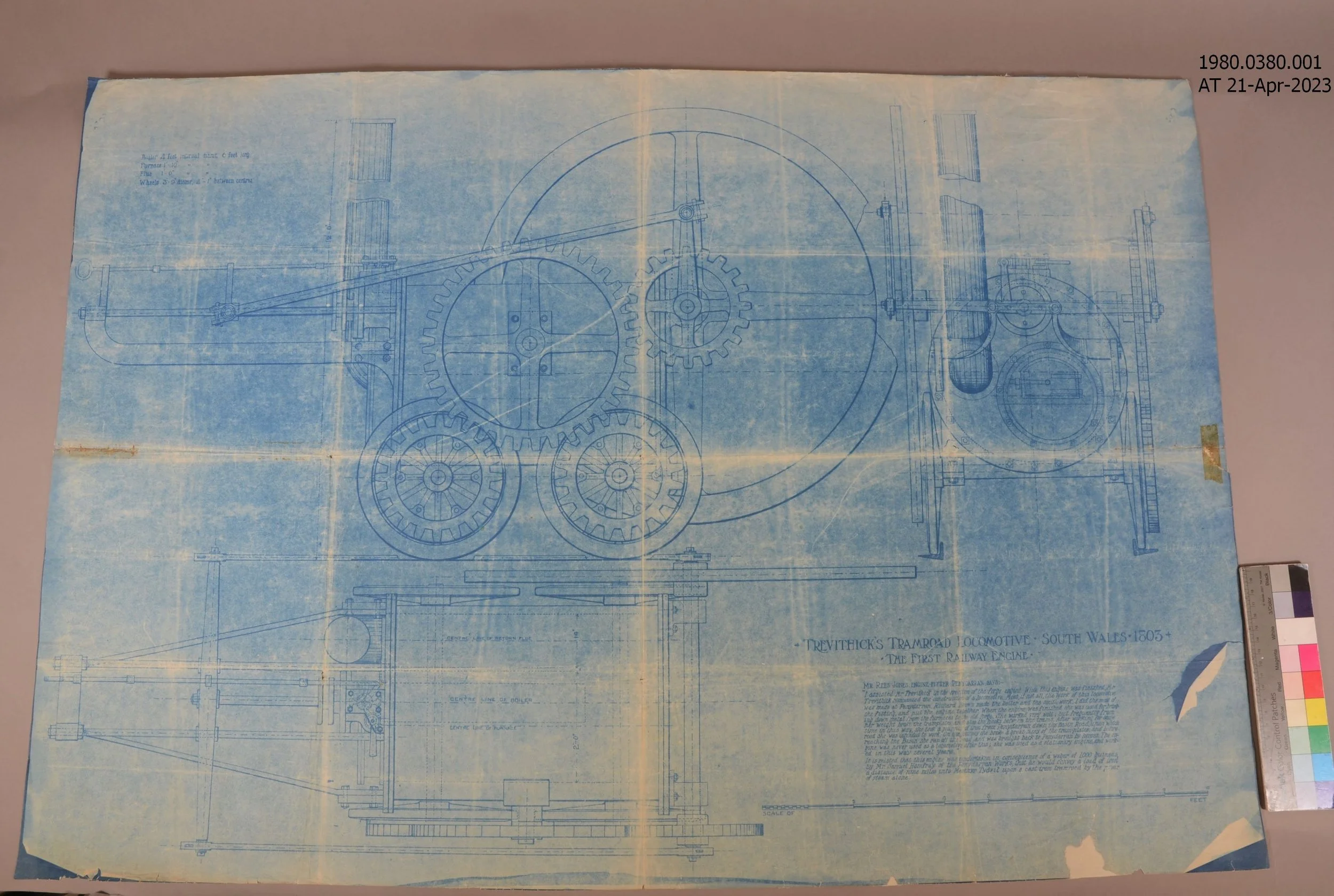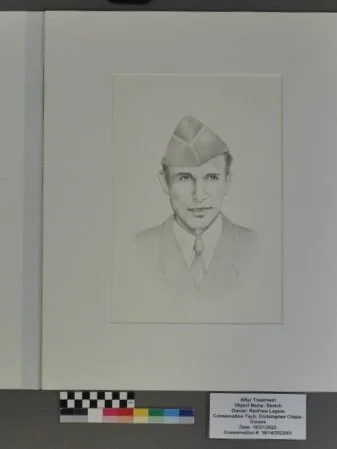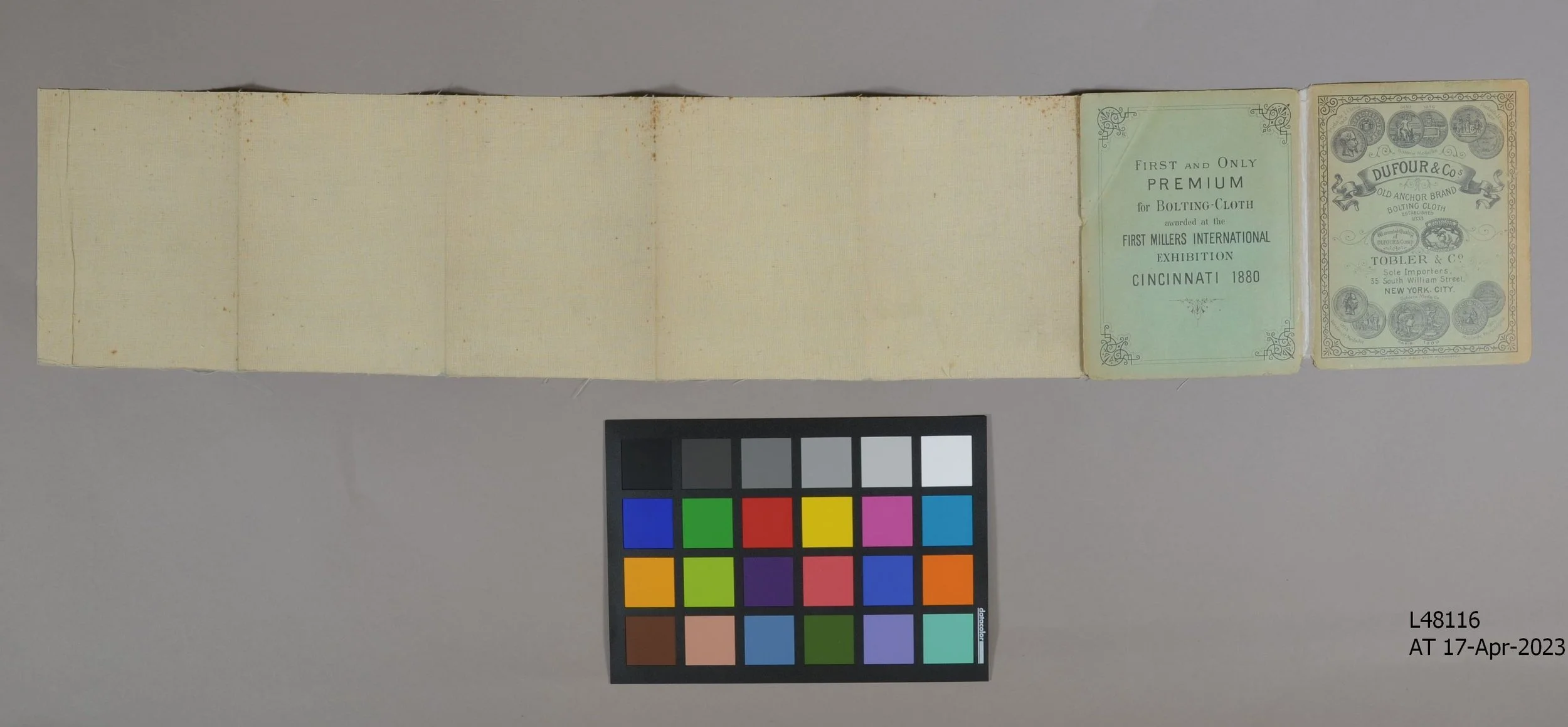Treatment Portfolio
Blueprint, Date Unknown
Blueprint, Ingenium Collection
Material Composition Paper
The Blueprint had severe creasing, several large and small tears (including areas of loss), as well as tape and adhesive residue from a previous repair. Gum and Natural Rubber erasers were used to remove any surface grime, then the Blueprint was humidified and allowed to dry overnight to flatten it. The tears without any significant loss were repaired on the rear side using heat-activated Texacrly tissue paper. Excess tape was removed using a scalpel, then infills were done using Japanese Tissue paper of appropriate thickness adhered using Wheat Starch Paste.
Before Treatment
After Treatment
Graphite Drawing, early 21st c. Canada
Material Composition Sketch Paper and Graphite Pencil.
Graphite Drawing of WWII Soldier Alfred D. Wade by Ken Perryment, done in the early-mid 2000’s on behalf of the Renfrew Legion as part of a series of pencil sketches of First and Second World War casualties from Renfrew, Ontario.
The Drawing was in excellent condition with minimal surface dirt or mechanical damage. A sling mount was created to house the work out of 100% rag board, hinged with water-activated hide glue adhesive tape, with a backing made from Mylar and double-sided adhesive tape.
Before Treatment
After Treatment
Study for Trio, 1953 Canada
Study for Trio by Henri Masson, 1953. Done on behalf of the Ottawa Art Gallery.
Material Composition Graphite Pencil Drawing on Paper
The work had minor surface grime, a small ink spot, and some minor mechanical damage on the bottom TL. Adhesive tape from a previous treatment remained on the Verso (partially covering the sketch of the horse) which needed to be removed. A sling mount was created to house the work out of 100% rag board, hinged with water-activated hide glue adhesive tape, with a backing made from Mylar and double-sided adhesive tape. The work was given a mechanical cleaning using gun erasers with care made to avoid the sketches, and the tape from a previous treatment was removed using a 5% w/v solution of Carboxyl Methyl Cellulose and Deionized Water and was removed using dental tools and spatulas.
Before Treatment
After Treatment
Pamphlet, early 20th c.
Bolt Cloth Sample Pamphlet by Dufour & Co, Ingenium Collection
Material Composition Paper (Various), Bolt Cloth
The samples of Bolt Cloth in the Sample Pamphlet were creased, with one being attached by only one fibre. The front cover of the booklet had also become detached from the rest of the Pamphlet, and the two cover sheets had some superficial damage. The creased samples were humidified using wetted blotting paper sandwiched between dry blotting paper, and the nearly detached sample was readherred using wheat starch paste. Damage on the cover sheets was repaired using wheat starch paste and supported using heat-activated texacryl tissue, and a new hinge was created to attach the cover the rest of the pamphlet using texacryl tissue. Fitted sheets of Mylar were added to cover the sample sheets to mitigate the risk of future creasing during storage.
Before Treatment
After Treatment

